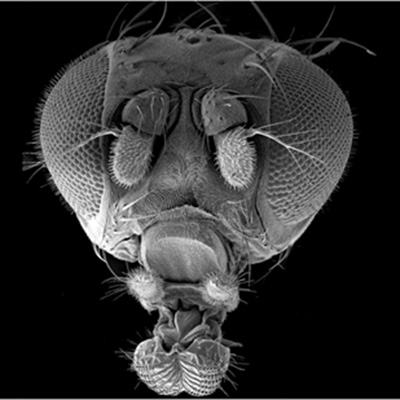Kyoto University researchers clarify genetic adaptations that have emerged in fruit flies kept in the dark for over 60 years
The study of evolution is hampered by the fact that it generally occurs too slowly to be observed in real time, so only the traces left after an evolutionary event remain. Kyoto University researchers have been working on a unique research tool that can overcome this difficulty since 1954. Their Dark-fly line of fruit flies has been kept continuously in the dark for generations; though these flies have an appearance similar to normal fruit flies, it has been suspected that the Dark-fly has undergone evolutionary change as a result of its unusual living environment. Earlier work at Kyoto University quantified this change, identifying 220,000 single alterations in the genetic code. Now, an innovative study has narrowed down the changes to about 100 genes clearly associated with the ability to survive and reproduce in the dark.
In the journal Genes Genomes Genetics , Kyoto University researchers have revealed how they applied genetic analyses to the Dark-fly line and uncovered specific mutations that occurred within it. The results are the first of their kind.
The researchers crossed Dark-flies and normal fruit flies and raised the offspring in the dark or under a normal daily light–dark cycle. They then analyzed the frequencies of genetic changes originally associated with the Dark-flies at the start of the experiment, and after 22 and 49 generations. Those variants that changed in frequency during these generations in the different groups were identified as being associated with adaptation to the dark. Among the genes found to be mutated in the Dark-fly were those that encode pheromones or are associated with sensing pheromones. Unsurprisingly, genes associated with daily rhythmical changes in the body, known as the circadian rhythm, were also identified.
The Dark-fly can be incredibly useful for looking at adaptive changes in the genome, as mutations that are beneficial when living in the dark can be identified through large-scale DNA comparisons within the population.

Dark-fly head taken by an electron scanning microscope
The structure strongly resembles that of a normal fruit fly.
Paper Information
[DOI] http://dx.doi.org/10.1534/g3.115.023549
[KURENAI ACCESS URL] http://hdl.handle.net/2433/209002
Minako Izutsu, Atsushi Toyoda, Asao Fujiyama, Kiyokazu Agata, and Naoyuki Fuse
"Dynamics of Dark-Fly Genome Under Environmental Selections"
Genes Genomes Genetics, 01 February 2016





